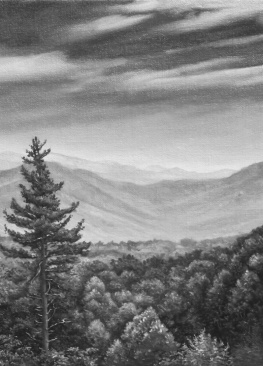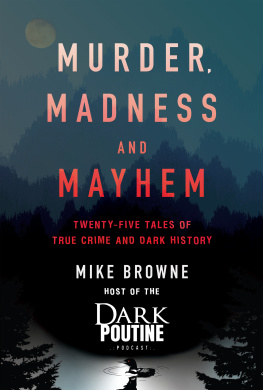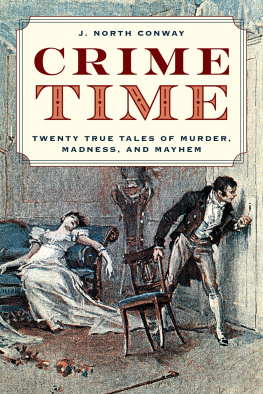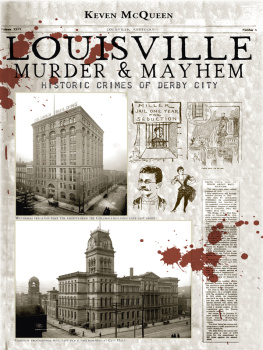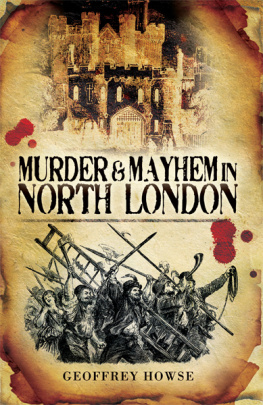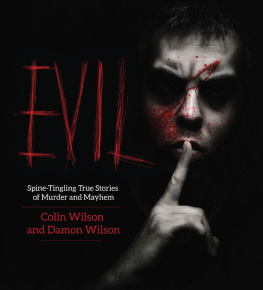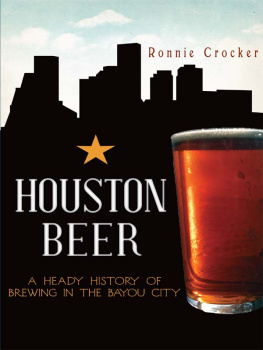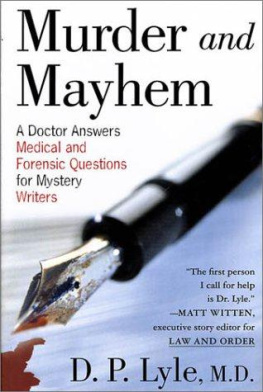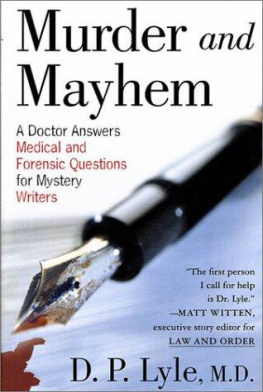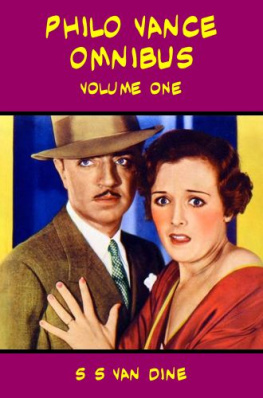

Published by The History Press
Charleston, SC 29403
www.historypress.net
Copyright 2014 by Mike Vance and John Nova Lomax
All rights reserved
First published 2014
e-book edition 2014
ISBN 978.1.62585.056.0
Library of Congress Cataloging-in-Publication Data
Vance, Mike, 1959-
Murder and mayhem in Houston : historic Bayou City crime / Mike Vance and John Nova Lomax.
pages cm
Summary: Explore the history of homicide in Houston, Texas--Provided by publisher.
Includes bibliographical references.
print edition ISBN 978-1-62619-521-9 (paperback)
1. Murder--Texas--Houston--History. 2. Crime--Texas--Houston--History. 3. Criminals--Texas--Houston--Biography. 4. Houston (Tex.)--History. 5. Houston (Tex.)--Social conditions. 6. Houston (Tex.)--Biography. I. Lomax, John Nova. II. Title.
HV6534.H8V36 2014
364.1097641411--dc23
2014031396
Notice: The information in this book is true and complete to the best of our knowledge. It is offered without guarantee on the part of the authors or The History Press. The authors and The History Press disclaim all liability in connection with the use of this book.
All rights reserved. No part of this book may be reproduced or transmitted in any form whatsoever without prior written permission from the publisher except in the case of brief quotations embodied in critical articles and reviews.
CONTENTS
PREFACE
It must be said at the outset that this book was never intended to be encyclopedic. We knew of all the later cases, having lived through the Houston media coverage, but with the nineteenth-century stories, one case often led to another. In the end, we found that we could fill three or four of these books with stories that are just as interesting.
Some of the cases contained within may strike you as sadder than others. Some are definitely more brutal. Some may hit a particular chord that is close to home. They are all crimes and tragedies, and we tell them here in the interest of history.
We made every effort to spotlight stories that have slipped into the recesses of this citys gargantuan memory hole. Each new generation tends to forget the history of the one that preceded it here. Maybe thats common to all cities. Maybe New Yorkers, Chicagoans and San Franciscans forget just as swiftly as Houstonians. But the older we get, it seems more astonishing how little the younger Houstonians know about what happened here when we were children or young men in the 1970s and 80s.
We considered some stories too high profile to rehash, including Andrea Yates, the Cheerleader Mom, Coral Eugene Watts, Clara Harris, the Pea-Ertman gang initiation murders and the Blood and Money Robinson-Hill killings. Others, such as Dean Corll and Karla Faye Tucker, have been covered elsewhere, but we touch on them here, as they relate to other stories we wanted to tell. In short, if there was already a book or movie about something, then what was the point of retelling it in our few pages?
There are many particularly ghastly cases that we didnt delve into: the 1973 Willow Meadows spree-killing of several little girls who were gunned down as they walked home from school and the brutal 1983 slaying of the Malibu Grand Prix workers come to mind.
We did try to include stories that were linked somehow to others, and it is amazing and chilling to find how many were. In some cases, its our belief that these tales have never been told in full, or at least not in a prominent enough venue.
Local histories have tended to gloss over this citys dark side, choosing instead to cite the ever-increasing tonnage coming and going from the Houston Ship Channel, the scientific wonders of NASA and the Texas Medical Center, the financial feats of powerful banker-developers like Jesse Jones and the gargantuan deeds of the great oil men.
Thats important history to record, but thats only half of Houstons story. Its high time the dark side comes to light. Contrast is the key to any great portrait.
Finally, there is this belief: Houston and New Orleans stand alone as the creepiest cities on the Gulf Coast. With its pervasive voodoo ambience, sprawling cities of the dead, air of genteel decay and long history of murder and mayhem, New Orleans is undeniably a spooky town. Fright is a cottage industry there. Having said that, Houston is not far behind. Houstonians just dont celebrate death and the past the way New Orleanians do. In fact, we tend to simply forget all the awful and weird things that have happened here over the last 179 years or so, and mercifully so because there have been an enormous number of terrible episodes. Its just that with few exceptions, this absent-minded behemoth of a city has forgotten its most chilling outrages, its many midnights in dozens of evil gardens.
ACKNOWLEDGEMENTS
No book happens without plenty of help. Wed like to thank those who are deserving of our sincere gratitude. Several people were interviewed for the various stories. Dr. Stephen Hardin, author of the erudite and entertaining book Texian Macabre, was great. Thanks also to Sherrie Tatum and Jeff Statton, who spoke so freely about their painful memories. There were the Cooley family, Bill Thomas, Vic Driscoll, Scott Vogel and four Chambers County experts: Bobby Scherer, Kevin Ladd, Robert Schaadt and Gary Wiggins.
We could not have written much of anything without the Harris County Archives and Sarah Jackson and Annie Golden. The other such magical place is the Houston Metropolitan Research Center of the Houston Public Library. Jo, Laney, Caroline and Aaron were there to help with materials, and Joel Draut and Tim Ronk helped with several images. Lastly, Francisco Heredia of the Harris County District Clerks Historical Records was terrifically helpful in locating some old files.
Other image help was provided by Jene Anderson of TDCJ Archives in Austin and John Slate of Dallas Municipal Archives. Major Debra Schmidt of the Harris County Sheriffs Department and James Chapman of the Houston Police Department were also generous with their resources. Thanks also to Michael Bailey and Jamie Murray at the Brazoria County History Museum.
A special thank-you goes to some folks such as Margaret Downing, Louis Aulbach and Paul Scott. Christen Thompson of The History Press has graciously walked us through the entire process. Then, last but not least, as they say, huge thanks go to our respective wives, Kelly Graml Lomax and Anne Vance, who had to listen to us ramble on about all this stuff for the last year.
ROWDY BEGINNINGS
For the not-yet-two-year-old town of Houston, March 28, 1838, was a banner dayfine weather and the biggest spectacle the capital of Texas had yet seen. On that date, in what was Houstons first widely publicized execution, two convicted murderers were slated to hang simultaneously from a gallows erected near what is now the corner of Main Street and Webster Avenue. A crowd of two to three thousand men, women and children flocked to the hanging tree, where they watched and jeered as David James Jones and John Christopher Columbus Quick were wheeled in a cart under the beam, had ropes placed around their necks and said their last words. Seconds later, the hangman cracked his whip on the team, and the cart was wheeled out from under the doomed men.




